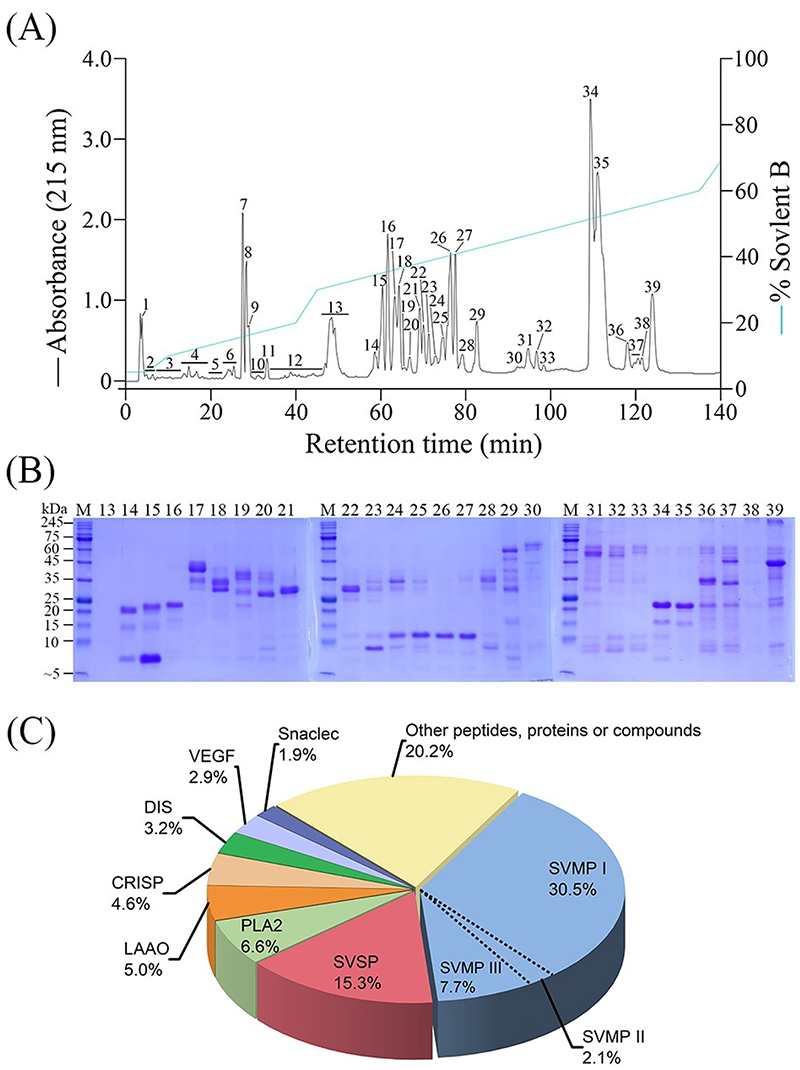
 中央研究院 生物化學研究所
中央研究院 生物化學研究所
Trimeresurus gracilis is an endemic alpine pitviper in Taiwan with controversial phylogeny, and its venom proteome remains unknown. In this study, we conducted a proteomic analysis of T. gracilis venom using high-performance liquid chromatography-tandem mass spectrometry and identified 155 toxin proteoforms that belong to 13 viperid venom toxin families. By searching the sequences of trypsin-digested peptides of the separated HPLC fractions against the NCBI database, T. gracilis venom was found to contain 40.3% metalloproteases (SVMPs), 15.3% serine proteases, 6.6% phospholipases A2, 5.0% L-amino acid oxidase, 4.6% Cys-rich secretory proteins (CRISPs), 3.2% disintegrins, 2.9% vascular endothelial growth factors (VEGFs), 1.9% C-type lectin-like proteins, and 20.2% of minor toxins, nontoxins, and unidentified peptides or compounds. Sixteen of these proteoforms matched the toxins whose full amino-acid sequences have been deduced from T. gracilis venom gland cDNA sequences. The hemorrhagic venom of T. gracilis appears to be especially rich in PI-class SVMPs and lacks basic phospholipase A2. We also cloned and sequenced the cDNAs encoding two CRISP and three VEGF variants from T. gracilis venom glands. Sequence alignments and comparison revealed that the PI-SVMP, kallikrein-like proteases, CRISPs, and VEGF-F of T. gracilis and Ovophis okinavensis are structurally most similar, consistent with their close phylogenetic relationship. However, the expression levels of some of their toxins were rather different, possibly due to their distinct ecological and prey conditions.
